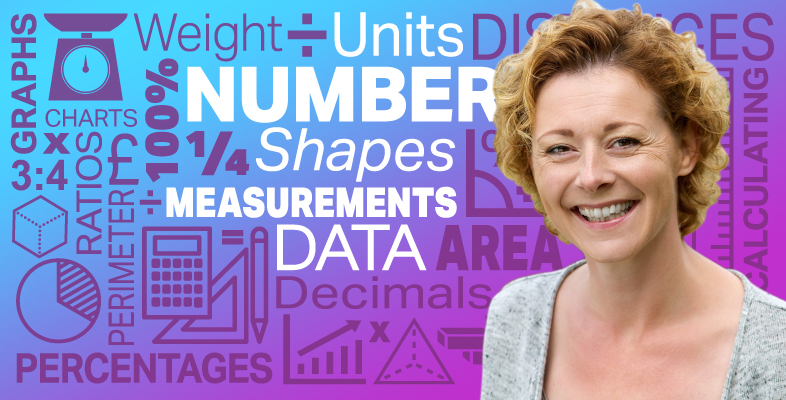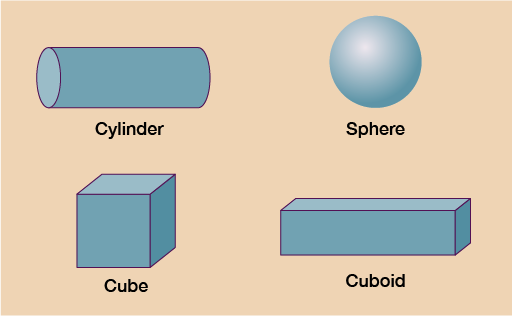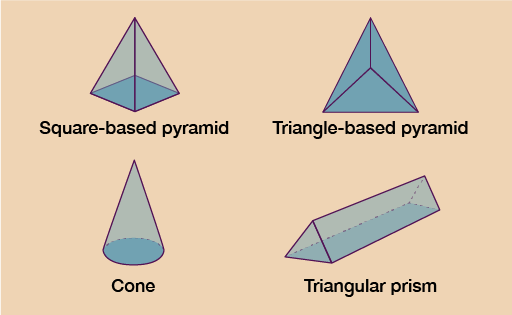1.4 Common 3D shapes
You will be familiar with some common 3D shapes.
Box _unit4.1.2
Hint: Make sure you understand the difference between a cube (3D square) and a cuboid (3D rectangle).
Some other 3D shapes that you may come across are shown in Figure 9.
Now try the following activity.
Activity _unit4.1.4 Activity 4: Properties of 3D shapes
- The sides of 3D shapes are known as faces. Complete the following table:
| Shape | Number of faces |
|---|---|
| Cube | |
| Square-based pyramid | |
| Sphere | |
| Cylinder | |
| Cuboid | |
| Cone | |
| Triangular-based pyramid | |
| Triangular prism |
Interactive feature not available in single page view (see it in standard view).
Answer
| Shape | Number of faces |
|---|---|
| Cube | 6 |
| Square-based pyramid | 5 |
| Sphere | 1 |
| Cylinder | 3 |
| Cuboid | 6 |
| Cone | 2 |
| Triangular-based pyramid | 4 |
| Triangular prism | 5 |
As well as faces, 3D shapes also have edges and vertices (corners):
Interactive feature not available in single page view (see it in standard view).
- Complete the following table:
| Shape | Number of edges | Number of vertices |
|---|---|---|
| Cube | ||
| Square-based pyramid | ||
| Sphere | ||
| Cylinder | ||
| Cuboid | ||
| Cone | ||
| Triangular-based pyramid | ||
| Triangular prism |
Interactive feature not available in single page view (see it in standard view).
Answer
| Shape | Number of edges | Number of vertices |
|---|---|---|
| Cube | 12 | 8 |
| Square-based pyramid | 8 | 5 |
| Sphere | 0 | 0 |
| Cylinder | 2 | 0 |
| Cuboid | 12 | 8 |
| Cone | 1 | 1 |
| Triangular-based pyramid | 6 | 4 |
| Triangular prism | 9 | 6 |


